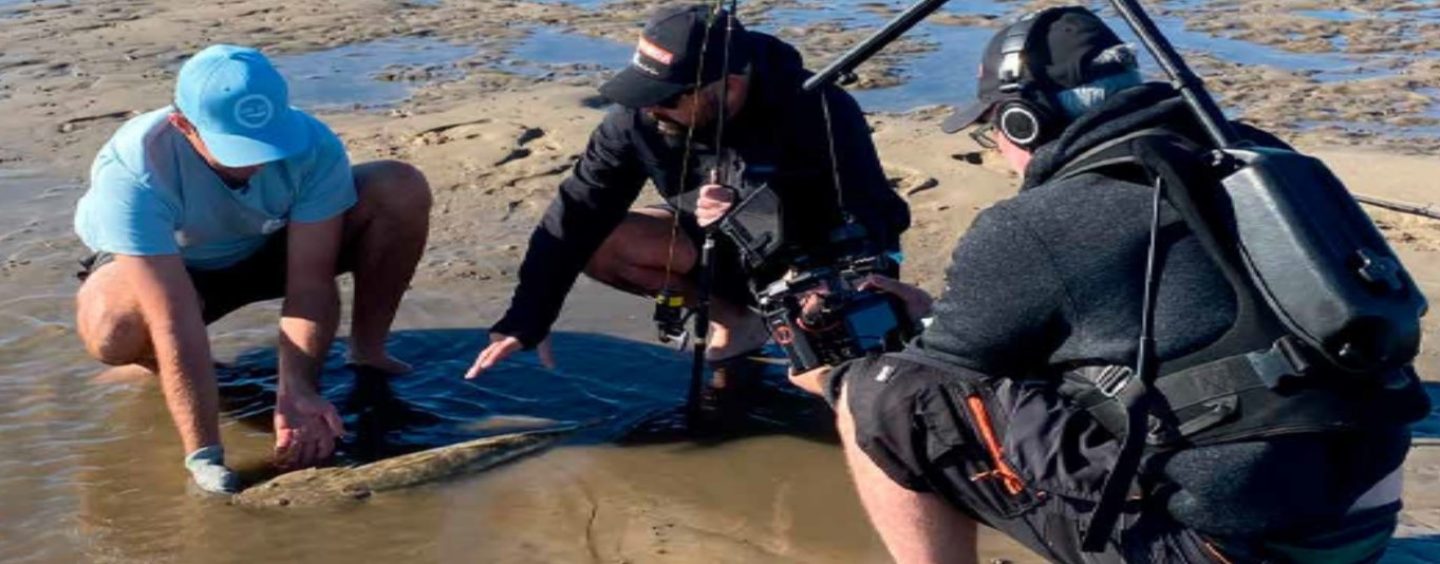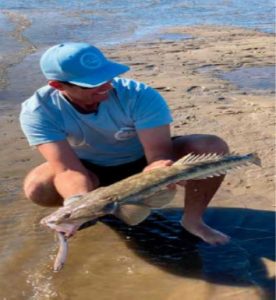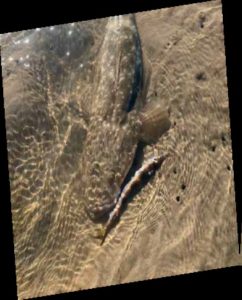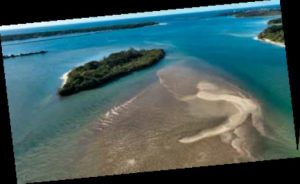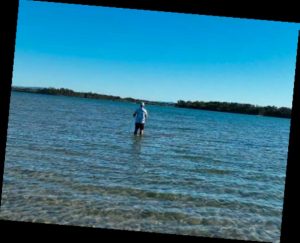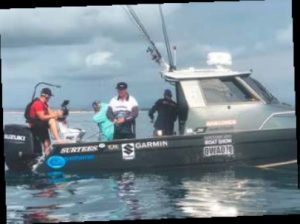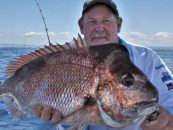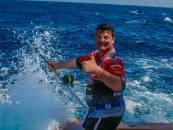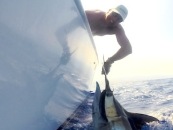What is it with flathead? They have this tendency to capture anglers’ imaginations right around Australia, they’ll drain your bank account and leave you in your tackle box sorting throughout the hundreds of lures you’ve purchased just to find that right one that the fish is wanting to eat just for that day. Well recently we decided to do a shoot on targeting and catching big lizards for our show Step Outside with Paul Burt which airs on 7Mate every weekend to help anglers successfully target these silent carnivores on shallow water flats. That’s right shallow water flats, so shallow that when the fish decides to eat your lure, it leaves a hole in the water the size of a washing machine. Surface strikes are not something many flathead fishermen come across, but the technique of Soft Gliding certainly brings out the animal in this fish.
Johnny Costello from My Lure Box invents his own lures, he see’s what the fish are eating and basically goes and makes something that looks very similar even if the lure is 8 to 10 inches long. His Soft Glides are meant to look like something between a mullet, pike, whiting and even a flathead and man do these things work. Rigged to look like a punk rocker with hooks coming out of every orifice there’s no way the fish would strike and not get hooked up. No disrespect to punk rockers out there by the way.
I was introduced to John a few years ago and have watched closely on how his works of art have manifested into an Aussie icon and sit high within the billion-dollar lure industry. The technique when using one of his Soft Glides is nothing out of the ordinary in fact it’s even less than that. No twitching, no hop, skip and a flick, no lifting of the rod and definitely no deep-water channel jigging or bobbing. In fact, it’s as easy as a single rotation of the handle and then let the lure sink back down to deck before repeating with another single rotation of the handle. Remember you’re only fishing in 2 to 3 feet of water. In this depth the big flatties lie and wait to ambush other marine life being pushed out by the current or other marine life just foraging around for food.
Longer casts are a key to catching big fish too. Basically, you can cast a country mile with a lure that is seriously so big yet super slow on the sink that it allows you to simply lob the lure with a mighty flick and you’ve easily obtained a 60-metre cast, that’s 60 metres of grounds you’re covering on the retrieve. The gear set up is also quite unique. A good mate of mine, Greg Reid from Pro Lure, is based south of Sydney around Georges Basin and he showed me recently his outfit when targeting big flatties on large glides down there and it’s very similar to John’s.
A 10-foot rod matched with a 2500 reel, in this case the new Shimano Sedona, spooled with 10-pound braided line and a 12-pound fluorocarbon leader. For me when I target flatties, I’ve always used a Shimano 702 two-piece spin stick matched with a 2500 sized reel and similar weighted braid. Apparently, it’s all in the rod when it comes to casting such a great distance and this is mainly due to the lure being so big and weighty that the rod can handle it and basically a small whippier rod wouldn’t cut it.
Places to fish are basically anywhere there’s a large sand bank running adjacent to a channel, a yabbie flat or even a shallow channel at high tide. You see these big flatties don’t mind what time of the day it is as it’s all tide dependent. It could be middle of the day, sun’s up high, hundreds of boats whizzing by yet still they’ll make their way up onto the shallows, sink into the sand and wait patiently and silently for that one moment a small fish or crustacean passes by or in this case your 8 to 10 inch Soft Glide. Remember the retrieve is simple, the lure will pull through the water 4 feet at a time before sinking back down as you stop winding momentarily then as you start the retrieve again the lure rises off the bottom and moves forward another 4 feet and it’s then when the fatties will strike and quite often so abruptly and with ferocity that they break the surface of the water leaving the angler breathless in awe.
As the tide flows out the fish start to move again, most of the time staying in that 2 to 3 feet of water. They will get in shallower for sure, but this depth is always a good start on where they’ll be feeding. With low tide about to take place and the current slowing right down, the fish will generally spread out around the neck of where a channel flowed out to whilst the water was running – even the shallow entrance to small drains and or creeks. Here a shotgun cast works a treat. Basically, start working the angle of the bank and feather your cast to the left or right of the cast beforehand. That way you’re covering every inch of flat and a certainty of a hook up would be imminent.
Key pieces of equipment are definitely polarised sunglasses (I run Tonic and find them super comfortable. The glass lenses cut directly through the glare on the water’s surface, and they have some weight to them, meaning they sit better on your face), and a glove to handle a big flattie that has just eaten your lure. If you want to pick her up to de-hook her, then gloves are a necessity, especially when the fish you’ve just caught measures over 90 centimetres in length and weighs over 7 kilograms.
Stealth is key and never walk through virgin water unless you’ve already peppered it with casts because quite often you’ll see that monster flathead take off after being spooked from you walking through.
There’s a couple of key pieces of information for you when targeting big flatties on shallow flats and be sure to check out this episode being Season 6 Episode 30 of Step Outside with Paul Burt on 7Mate or watch it on the 7Plus website/App and also be sure to load up all your gear from our mates at Anaconda.
Good fishing! Burty
Published in print October-December 2023






















